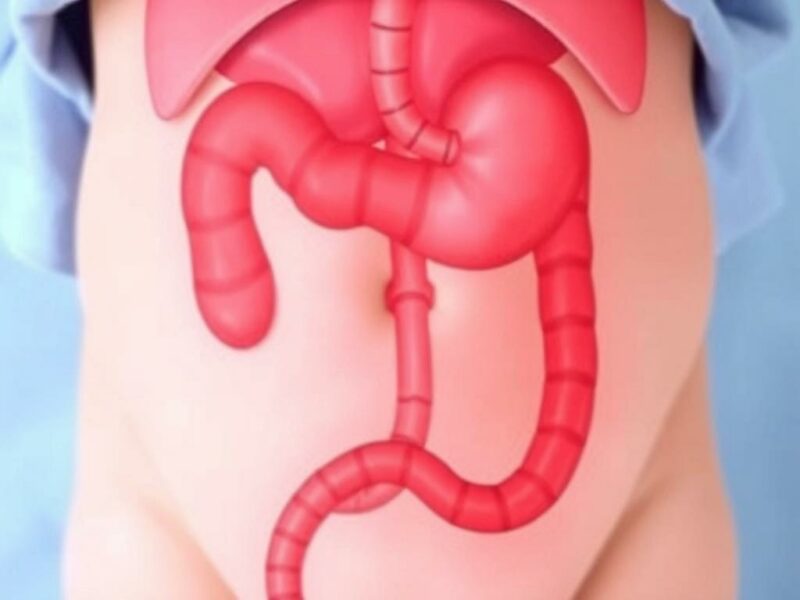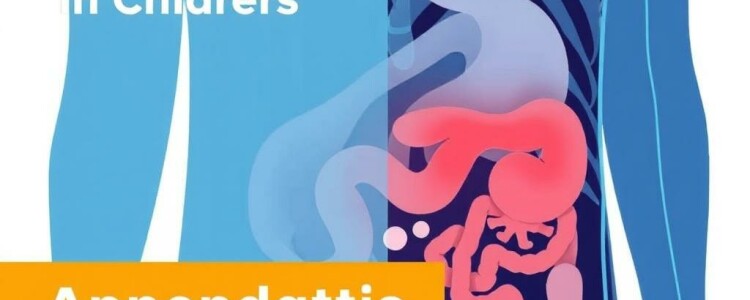Appendicitis in children is a topic that can cause a lot of concern for parents. It’s one of the most common causes of emergency abdominal surgery in kids and often comes on suddenly. Understanding the symptoms, causes, and treatment options can help parents act quickly, which is crucial for the best outcome. This article will walk you through everything you need to know about appendicitis in children—from recognizing the early signs to what happens during surgery. By the end, you’ll feel more confident about this condition and how to keep your child safe.
What Is Appendicitis?
Appendicitis is an inflammation of the appendix, a small, tube-like organ attached to the large intestine. While its exact purpose is not fully understood, the appendix can become inflamed and infected, causing severe abdominal pain and other symptoms. In children, appendicitis can be particularly tricky to diagnose because their symptoms might not always be typical, and young kids may have difficulty expressing how they feel.
The appendix can become blocked by stool, swollen lymph nodes, or other debris, leading to bacterial growth and infection. If untreated, the appendix may burst (rupture), leading to a serious infection called peritonitis, which spreads through the abdomen and can be life-threatening. Therefore, timely diagnosis and treatment are essential.
Why Is Appendicitis Common in Children?
While appendicitis can affect people of all ages, it is most commonly seen in children and teenagers between the ages of 10 and 19. This prevalence is believed to be related to the growth and activity of the lymphatic tissue within the appendix, which tends to be more pronounced during these years. Additionally, because children’s immune systems are still developing, they may be more susceptible to infections that can trigger inflammation.
Furthermore, diagnosing appendicitis in children can be challenging because their symptoms often overlap with other common childhood ailments such as stomach flu, constipation, or urinary tract infections. This is why understanding the precise symptoms and acting quickly can make a huge difference.
Common Symptoms of Appendicitis in Children
Symptoms of appendicitis can vary widely among children, but several signs often point to this condition. Here are some of the most common symptoms to watch for:
- Abdominal pain: Usually starts around the belly button and then shifts to the lower right side of the abdomen. This pain tends to become sharper and more intense over time.
- Nausea and vomiting: Many children with appendicitis feel nauseous or vomit before or shortly after the pain begins.
- Loss of appetite: A sudden refusal to eat or drink is often a warning sign.
- Fever: A mild fever may develop, generally below 101°F (38.3°C) at first but potentially rising as the condition worsens.
- Swelling or bloating: The abdomen may appear swollen or feel firm to the touch.
- Constipation or diarrhea: Either can happen, but constipation is more common due to inflammation.
It’s important to note that every child may not experience all these signs, so any persistent or worsening abdominal pain should be taken seriously.
How Is Appendicitis Diagnosed in Children?
If you take your child to see a doctor with symptoms that suggest appendicitis, the diagnosis process will involve a few important steps:
Physical Examination
The doctor will perform a thorough physical exam, pressing on different areas of the abdomen to localize pain and tenderness. This helps determine if the pain is consistent with appendicitis. Sometimes, the doctor will gently bounce or release pressure to see if the pain changes, a maneuver known as rebound tenderness.
Medical History
Parents will be asked to describe when symptoms started, how they have progressed, and any other relevant health information. This history helps the doctor rule out other conditions.
Imaging Tests
To get a clearer picture inside the abdomen, doctors often use:
| Test | Description | Advantages | Disadvantages |
|---|---|---|---|
| Ultrasound | Uses sound waves to create images of the appendix | No radiation, quick, safe for children | May be less accurate in obese children or if gas obstructs view |
| CT Scan | Provides detailed cross-sectional images | Highly accurate for diagnosis | Exposes child to radiation, typically reserved if ultrasound is inconclusive |
Blood and Urine Tests
These tests check for signs of infection or other conditions. A high white blood cell count may suggest appendicitis but is not definitive on its own.
Treatment Options for Appendicitis in Children

Once diagnosed, the treatment for appendicitis generally involves surgery to remove the inflamed appendix. However, approaches to treatment can vary, especially depending on how early or severe the appendicitis is.
Appendectomy: Surgical Removal of the Appendix
An appendectomy is the most common and effective treatment for appendicitis in children. It can be performed in two ways:
- Laparoscopic appendectomy: A minimally invasive surgery where small incisions are made, and a camera guides the surgeon. This method usually has a shorter recovery time and less scarring.
- Open appendectomy: A single, larger incision is made in the lower right abdomen. This approach may be necessary if the appendix has ruptured or if there are complications.
What Happens During Surgery?
Before surgery, your child will receive fluids and antibiotics to prevent or treat infection. The surgeon will then remove the appendix, and depending on whether it has ruptured, clean the abdominal cavity if needed. Most children stay in the hospital for 1 to 3 days after surgery to recover.
Non-Surgical Treatment: Antibiotics Only?
In some cases, especially if appendicitis is caught very early or is uncomplicated, doctors may consider treating with antibiotics alone. This approach is becoming more common but is still debated. Antibiotic treatment might help avoid surgery temporarily, but there’s a risk appendicitis can recur. Therefore, most doctors recommend surgery as the definitive treatment.
Postoperative Care and Recovery
After surgery, your child will need some time to rest and recover fully. Here’s what you can expect:
- Pain management: Doctors will provide medication to control pain, which usually improves within a few days.
- Diet: Initially, your child might start with clear liquids and gradually move back to regular foods as tolerated.
- Activity restrictions: Kids should avoid strenuous activity and heavy lifting for at least a few weeks to allow healing.
- Incision care: Keep the surgical site clean and dry. Watch for signs of infection like redness, swelling, or discharge.
Most children recover completely and can return to normal activities within a few weeks.
Complications to Watch For
While most appendicitis cases are resolved with surgery, complications can still occur, especially if the appendix ruptures. Some potential complications include:
- Ruptured appendix: Leads to widespread infection and requires more intensive treatment.
- Abscess formation: A pocket of pus that develops around the appendix area, which may need drainage.
- Wound infection: Infection at the surgical site.
- Intestinal blockage: Scar tissue after surgery can cause obstruction later on.
Prompt medical attention can reduce the risks of these complications.
How to Prevent Appendicitis in Children
Unfortunately, there is no guaranteed way to prevent appendicitis since it often results from an obstruction or infection. However, some lifestyle and dietary factors might play a role:
- High-fiber diet: Eating plenty of fruits, vegetables, and whole grains may reduce the chance of blockages.
- Proper hydration: Keeping your child well-hydrated supports digestive health.
- Regular exercise: Promotes overall wellness and healthy bowel function.
While these steps can improve general health, they cannot eliminate the risk of appendicitis.
When to See a Doctor
Because appendicitis symptoms can develop quickly and worsen rapidly, knowing when to seek medical care is vital. Take your child to the emergency room or pediatrician immediately if they have:
| Symptom | Why to Seek Care |
|---|---|
| Severe or worsening abdominal pain | Could indicate appendicitis, especially if localized to the lower right side |
| Persistent vomiting | May cause dehydration and worsen the condition |
| High fever | Could mean infection is spreading |
| Abdominal swelling or tenderness | Signs of inflammation or possible rupture |
Don’t delay—early medical intervention can be lifesaving.
Conclusion
Appendicitis in children is a common but serious condition that requires prompt attention. While it can be frightening for parents to see their child experience abdominal pain and other symptoms, understanding what appendicitis looks like and how it is treated can reduce anxiety and facilitate quick action. Recognizing signs such as localized pain, nausea, and fever are keys to early diagnosis. Treatment typically involves surgery, which is a routine procedure with a high success rate. With timely care and proper follow-up, children recover well and lead healthy lives. Remember, if your child develops any symptoms suggestive of appendicitis, seeking prompt medical care is the best step you can take to protect their health.



